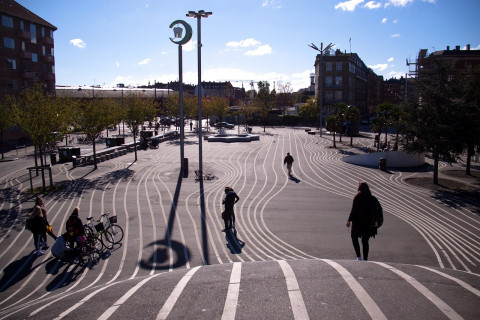From our experiences at the Smart City Expo World Congress last November, one thing became clearer than ever before: cooperation is key. We should not strive to reinvent the wheel; instead we should learn from each other, cooperate. In a series of four blog posts our intern Luc Baardman investigates the challenges of other smart cities in Europe. For this article, we contacted our friendly competitors in Copenhagen and asked for their top tips, tricks and gained experiences.
Equal to what we see in other cities, Copenhagen adopted smart technologies to combat wicked urban problems such as congestion and flash floods. Together with the set climate targets, these problems form powerful reasons why the city needs to reinvent itself. For this purpose, the Copenhagen Solutions Lab has been established as a governing body for smart city projects across all sectors.
Within this lab, a large emphasis is put on ‘triple helix partnerships’, where the lab accelerates implementation of innovation through collaborations with knowledge institutions, companies and citizens. Through focussing on five themes, Copenhagen aims to smarten the city. These five themes are stated in the image below.

Source: Copenhagen Solutions Lab
Its first theme covers people and flows. Within this, the Solution Lab aims to gather knowledge of how citizens move about in the city, focusing on movement patterns and citizen needs. This will provide a better picture of the use of the city and stand as a better foundation for the various city operations and further development in the city.
The second theme, digital services, improves the availability of the city services through digital solutions for citizens and tourists. Complementary to the first theme, this theme strengthens the physical/digital infrastructure and the digital solutions and services it will provide for both the citizens and tourists.
Another technical theme covers data-driven operations. For day-to-day operations in the city, a lot can be automated. A better basis for decision will be gathered through the collection of (big) data. This optimises current work procedures by prioritising relevant resources and targets services for the citizens through improving knowledge about citizen needs and behaviours.

Source: <http://cphsolutionslab.dk/open-data/>
The fourth theme, climate monitoring, is characterised by an improved knowledge of the environmental effects of traffic, nightlife, events etc., as well as the climate challenges related to larger incidents, such as cloudbursts. To be better prepared for these incidents, information is crucial.
A fifth and final theme focusses on the use of light in the city. Copenhagen sees lighting as a tool to increase safety, experience and usage of the urban space. Focus here is put on the qualitative human aspects, including the kind of social behaviour that light can support.
From the previous article, we already know about this network of Smart Cities in the Nordics, where Copenhagen is part of. Their special focus on climate monitoring reminds us that this is a pressing issue that we should consider to prioritise.
This was the last article of a series of four, in which we explored the possibilities for Amsterdam to learn from other cities. We have seen that in Berlin, a compelling case is made to share not only flagship projects, but also legislation and frameworks. Helsinki reminded us once again how important citizen engagement is, and Copenhagen shows how powerful a clear and strict planning can be.





